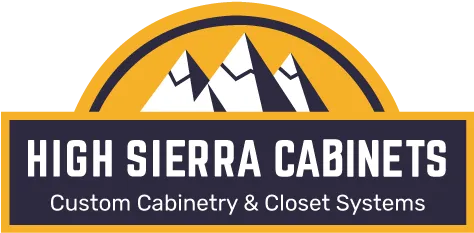Choosing Between MDF vs Plywood for Cabinets? Here's What You Need to Know
When it comes to picking out the stuff your cabinets are made of, the choice usually boils down to MDF or plywood. At High Sierra Cabinets, we get how big of a deal this decision is. It’s not just about what looks good — it’s about what works for your space, your style, and your budget.
Whether you’re leaning towards the smooth finesse of MDF for that perfect paint job or the sturdy reliability of plywood for areas that get a bit more love (and spills), we’re here to help break it all down for you.
Ready to dive in and figure out what’s best for your kitchen or bathroom? Let’s get to it.

Understanding the Differences between MDF and Plywood
Composition and properties of MDF
Medium Density Fiberboard, commonly known as MDF, is a type of engineered wood product. It’s made by breaking down hardwood or softwood residuals into wood fibers, often in a defibrator, combining it with wax and a resin binder, and forming panels by applying high temperature and pressure.
This process creates a material that has a smooth surface free from knots. The evenly dense structure of MDF makes it ideal for cutting, drilling without causing splinters or splitting.
MDF stands out for its uniformity. Its texture doesn’t have visible wood grain or knots which allows for an excellent painting surface that can result in superbly finished cabinets without the irregularities found in real wood.
Additionally, this engineered wood tends to be very stable and maintains its form under changes in temperature or humidity conditions better than solid wood materials like plywood cabinets might do.
This inherent stability also means that edges can be more precisely shaped, making MDF particularly suitable for intricate cabinet designs where precision is key.
Composition and properties of plywood
Plywood stands out as a preferred choice for cabinet construction due to its unique composition. It is made by layering wood veneers, ensuring grains run in alternate directions.
This cross-graining technique boosts the strength and stability of plywood, making it less prone to shrinkage or expansion. Such durability makes plywood ideal for areas in homes that experience frequent changes in humidity levels, like kitchens.
The properties of plywood extend beyond its remarkable strength. Plywood demonstrates excellent water resistance compared to other wood-based materials like medium density fibreboard (MDF).
This resistance is pivotal for kitchen cabinets that often face spills and moisture. Additionally, plywood’s ability to hold screws tightly makes it convenient for both the construction and installation phases of cabinetry.
Its smooth surface also allows homeowners to choose between leaving the natural wood grain visible with clear varnish or applying paint for a more custom look.
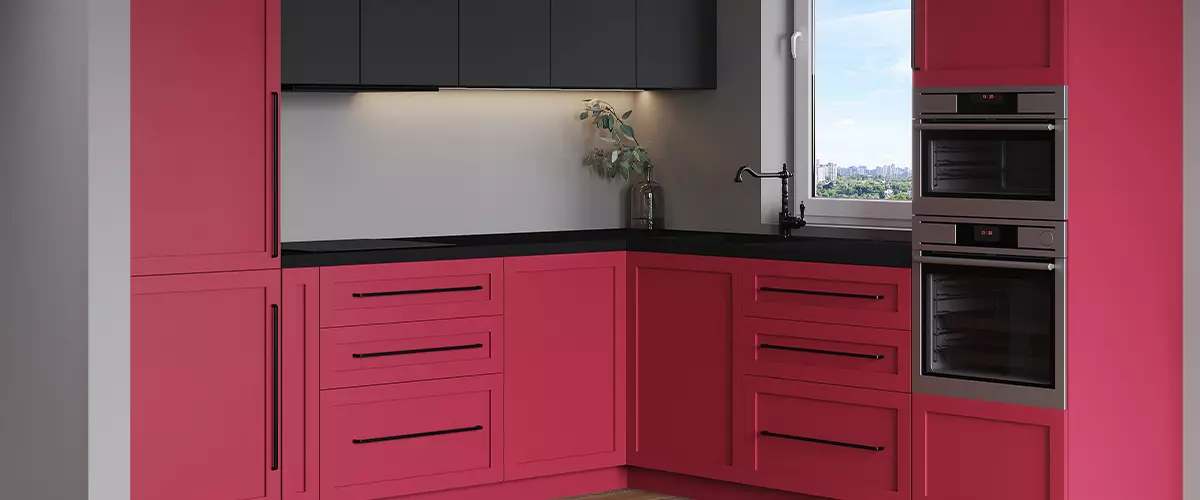
Pros and Cons of MDF Cabinets
MDF cabinets offer precise milling for a seamless finish and are a cost-effective option. They also provide an environmentally friendly choice and are an excellent surface for painting.
- Precise milling
MDF offers exceptional precision in milling, making it a popular choice for intricate cabinet designs. Its uniform density allows for clean cuts and sharp detailing without splintering or chipping, which is often a challenge with other materials.
MDF’s consistency makes it ideal for precise, detailed cabinetry work.
- Cost-effective option
Plywood is a cost-effective option for cabinets due to its reasonable pricing, making it a popular choice for budget-conscious homeowners. This material provides good value for money without compromising on quality and durability.
Additionally, plywood can be found in various price points, allowing flexibility in cabinet design while staying within budget constraints.
- Environmental friendliness
MDF is not as environmentally friendly as plywood due to the presence of formaldehyde in its adhesive. The off-gassing of formaldehyde can contribute to indoor air pollution, impacting both human health and the environment.
Plywood, on the other hand, uses fewer synthetic materials and typically contains lower levels of formaldehyde, making it a more sustainable option for cabinets.
Plywood’s composition often includes natural adhesives and sustainable wood sources, making it a greener choice compared to MDF.
While both options have their pros and cons, if environmental friendliness is a priority for your cabinetry project, plywood may be the more suitable material based on its eco-friendly attributes and lower impact on indoor air quality.
- Excellent painting surface
MDF provides an excellent painting surface due to its smooth, uniform texture. The consistent density and lack of knots or voids make it ideal for achieving a flawless painted finish.
Additionally, MDF’s fine particles allow for a more even distribution of paint, resulting in a professional and polished look for your cabinets.
Plywood, on the other hand, may have natural imperfections such as knots and grain irregularities that can affect the final appearance when painted.
While plywood can still be painted effectively with proper preparation, MDF’s superior surface makes it the top choice for those seeking a beautifully painted cabinet finish.
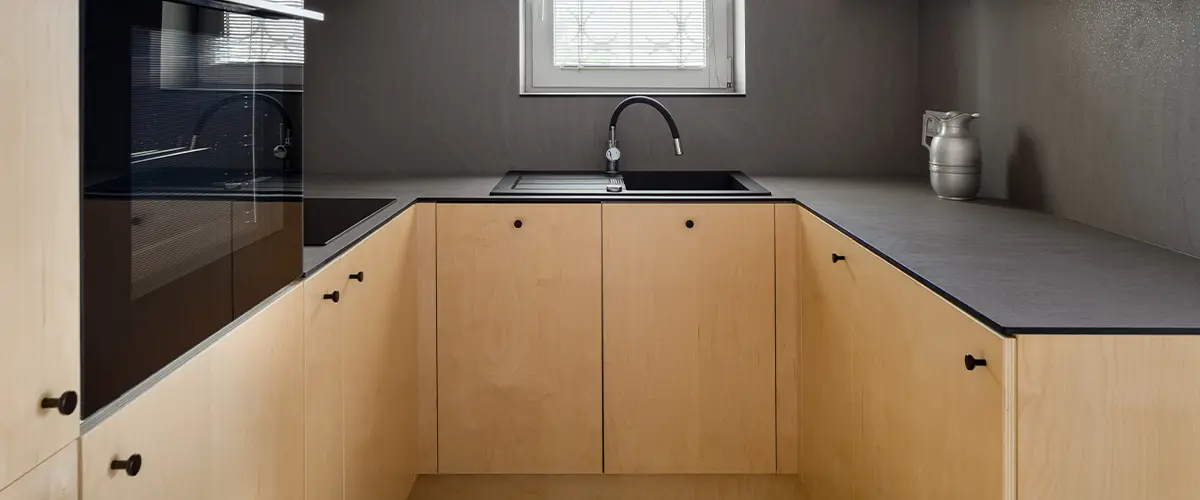
Pros and Cons of Plywood Cabinets
- High strength
- Easy installation
Plywood cabinets are favored for their easy installation. The lightweight nature of plywood makes it easier to handle and maneuver during the cabinet assembly process.
Its dimensional stability allows for precise cutting, fitting, and mounting, reducing the effort required for installation.
Additionally, plywood’s uniform strength and smooth surface facilitate efficient attachment of hardware and accessories.
The straightforward installation process of plywood cabinets can save time and labor costs for homeowners or professionals undertaking cabinet-making projects. Plus, with its ease of handling and versatility, plywood proves to be a practical choice for those seeking efficiency without compromising on quality or durability.
- Water resistance
Plywood cabinets have notable water resistance, making them suitable for kitchens and bathrooms where moisture is a concern. This quality stems from the way plywood is constructed, with layers of wood veneers bonded together using adhesive under heat and pressure.
As a result, plywood can withstand exposure to moderate levels of moisture without warping or deteriorating, making it an ideal choice in areas prone to humidity or occasional spills. Its water-resistant properties contribute to its durability and longevity as cabinet material.
MDF, on the other hand, does not boast the same level of water resistance as plywood. While MDF can be sealed against moisture, prolonged exposure may lead to swelling or warping of the material.
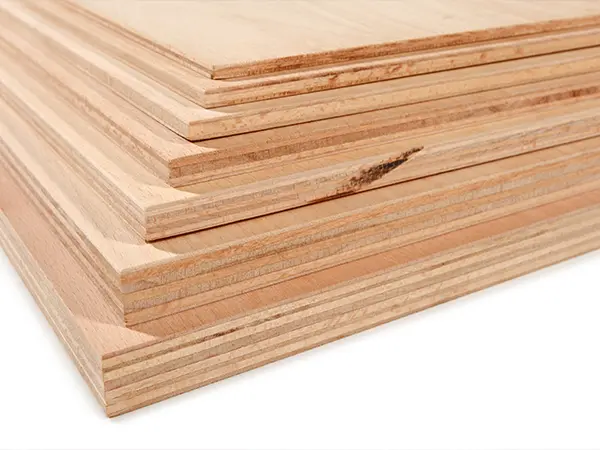
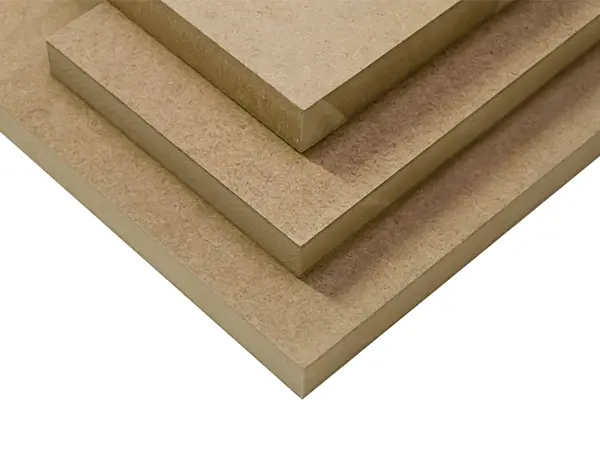
Which Option is Best for Your Cabinetry?
Factors to consider
- Durability: Evaluate the durability of each material based on the specific needs of your cabinets. Consider factors such as weight load and resistance to moisture and humidity.
- Cost: Compare the cost of MDF and plywood to fit within your budget. Take into account not only the upfront costs but also long-term maintenance expenses.
- Aesthetic Preferences: Consider the look you want for your cabinets. MDF offers a smooth surface ideal for painting, while plywood's natural wood grain may be more appealing to some.
- Environmental Impact: Assess the environmental friendliness of both materials, considering factors such as sourcing practices and recyclability.
- Application: Determine how the cabinets will be used and where they will be installed. This includes evaluating factors such as exposure to water or heavy usage.
- Maintenance: Consider the level of maintenance each material requires to keep your cabinets looking great over time.
Budget
When it comes to choosing between MDF and plywood for cabinets, budget plays a crucial role. Plywood tends to be more expensive than MDF, making it suitable for those with a higher budget allocation for cabinetry.
On the other hand, MDF provides a cost-effective option without compromising on quality. It’s ideal for those seeking durable yet affordable cabinet construction material.
Moving forward from considering the budget aspect, let’s delve into the functionality of these materials in cabinetry construction.
Functionality
MDF cabinets offer a smooth and consistent surface, making them suitable for intricate designs and details. They are best suited for indoor use due to their susceptibility to moisture.
On the other hand, plywood cabinets excel in areas prone to moisture or high humidity, such as kitchens and bathrooms. With its natural strength and durability, plywood is a practical choice for heavy-duty storage needs.
When deciding between MDF and plywood for cabinets, functionality should be a primary consideration. While MDF offers precision milling and an excellent painting surface, plywood’s water resistance and high strength make it ideal for demanding environments where longevity is crucial.
Aesthetics
When it comes to the aesthetics of your cabinetry, both MDF and plywood offer unique visual appeal. MDF cabinets can be finished with a smooth, seamless surface that is ideal for painting, giving you the freedom to achieve any desired color or finish.
On the other hand, hardwood plywood presents a natural wood grain that adds warmth and character to your space without needing additional finishing. Whether you prefer a sleek modern look or the charm of natural wood, both materials provide aesthetic options tailored to your style.
The world of cabinet aesthetics is broad and diverse – from clean contemporary finishes on MDF to the classic beauty of exposed wood grains in plywood. Each material offers its distinct visual characteristics designed to enhance various design schemes and preferences.
Maintenance
When it comes to maintenance, both MDF and plywood cabinets require regular cleaning and care. Wiping down the surfaces with a damp cloth and mild detergent is usually sufficient for day-to-day maintenance.
However, plywood cabinets may need additional protection against moisture, so applying a sealant or protective coating can help maintain their water resistance over time. On the other hand, MDF cabinets are prone to damage from excessive moisture, so it’s essential to keep them dry and address any spills or leaks promptly to prevent swelling or warping.

FAQs - MDF VS Plywood
Making the Call: MDF or Plywood for Your Cabinets?
Deciding on the material for your cabinets is a big step, but it doesn’t have to be a leap into the unknown. With High Sierra Cabinets by your side, consider this your cheat sheet to making a choice you’ll be happy with for years to come.
Whether you value the budget-friendly and smooth charm of MDF or you’re all about the durable and moisture-fighting powers of plywood, the best pick is the one that lines up with your life and your taste. Let’s make your cabinet dreams a reality, together.
Got a vision for your cabinets but not sure how to make it happen? High Sierra Cabinets is here to guide you through every step. Reach out to us, and let’s turn that vision into the heart of your home. (775) 242-6832
